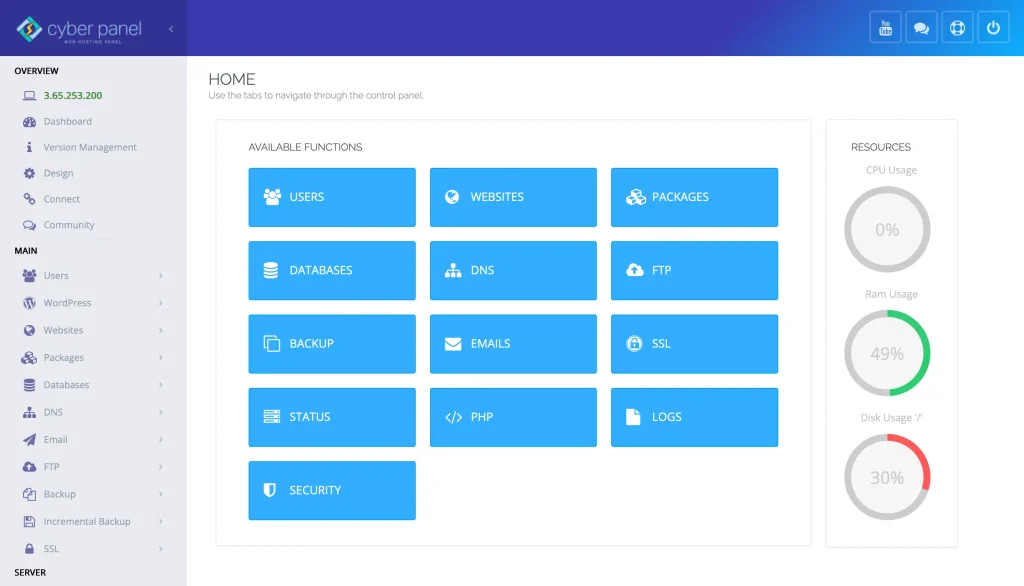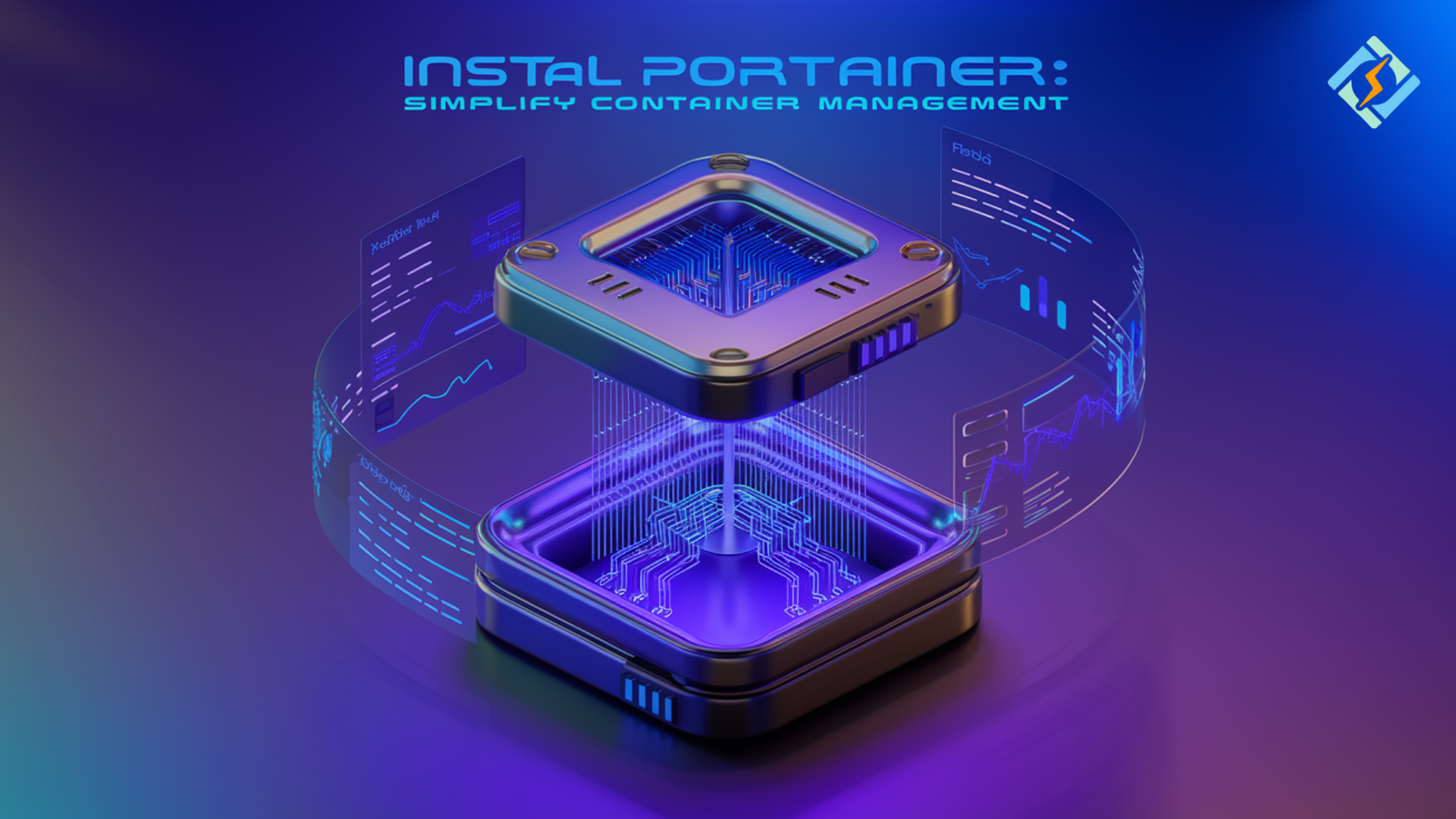Docker manages containers through the command line, which can be tedious and complicated for users who are not familiar with the commands of Docker. That’s where you have to install Portainer. It’s a lightweight open-source UI tool to manage Docker containers.
Portainer is a single solution that provides developers, system administrators, and DevOps engineers with a simple but powerful interface to manage your different environments. When using Docker, Portainer is a must-have tool with features like container logs, network management, and volume handling.
By the end of this article, you will have Portainer installed and running so you can take complete control of your Docker environment. Let’s dive in!
What is Portainer?
Portainer docker is an image container application that is administered. Portainer is a tool that interacts with containers, images, networks, and volumes from a web-based GUI (Graphical User Interface) rather than using the command line.
Why Use Portainer?
Makes Docker management easy enough for your dog — no more memorizing abstruse CLI commands.
Get exclusive access to all things tech-savvy, and be the first to receive
the latest updates directly in your inbox.
- Web Interface – Manage containers through a browser.
- Very light and open-source — Efficient and does not consume heavy resources.
- Multi-Environment Support docker standalone, Swarm, and Kubernetes.
How to Install Portainer on Docker
There should be Docker installed for Portainer on your system. If you still don’t have it installed, click on these steps.
Step 1: Installing Docker if it’s Not Already Installed
If you are using Ubuntu, run this command to install Docker:
sudo apt update sudo apt install -y docker.io sudo systemctl enable --now docker To test if docker is installed correctly:
docker --versionOutput:
Docker version 24.0.5, build ce2a9ed Step 2: Installing Portainer in Docker
With Docker installed, deploy Portainer with the official Docker image.
You can install Portainer with the below command.
docker volume create portainer_data docker run -d -p 8000:8000 -p 9443:9443 \ --name portainer --restart=always \ -v /var/run/docker.sock:/var/run/docker.sock \ -v portainer_data:/data \ portainer/portainer-ce:latest This command:
- Create a volume for Portainer’s data.
- Run the Portainer container on ports 8000 (agent communication) and 9443 (UI)
- Makes Portainer autopilot after system reboots.
To confirm that Portainer is running:
docker psOutput:
CONTAINER ID IMAGE PORTS STATUS f8b3f6d78e53 portainer/portainer-ce 0.0.0.0:8000->8000/tcp, 0.0.0.0:9443->9443/tcp Up 10 minutesStep 3: Find your Portainer to Dashboard
After Portainer has been installed, open the web-based dashboard via https://localhost:9443

During the first login, you need to set an admin password and select which environment, select “Docker”. Portainer detects your Docker installation automatically.
How to Install Portainer on Ubuntu
Step 1: Install Docker on Ubuntu
sudo apt update sudo apt install -y docker.io sudo systemctl start docker sudo systemctl enable docker Step 2: Install Portainer on Ubuntu
Run this command:
docker volume create portainer_data docker run -d -p 8000:8000 -p 9443:9443 \ --name portainer --restart=always \ -v /var/run/docker.sock:/var/run/docker.sock \ -v portainer_data:/data \ portainer/portainer-ce:latest Step 3: Verify Installation
docker ps | grep portainer Output:
f8b3f6d78e53 portainer/portainer-ce 0.0.0.0:9443->9443/tcp, 0.0.0.0:8000->8000/tcp Up 5 minutesNow go to https://your-server-ip:9443 and create your admin account.
CyberPanel — Its Importance in Managing Docker and Portainer

CyberPanel is a robust web hosting control panel to help manage your servers. Though primarily used for web hosting, both Docker and Portainer integration are also native.
How CyberPanel Makes Portainer Better
- Deploy in One Click (Docker) — No need for CLI to deploy containers
- Manage Containers Easily – Start, stop and monitor containers from CyberPanel.
- Automated Backups – Easy backup for containers and images
- Security Features – Manage firewalls and SSL for Docker apps
FAQs About Portainer Installation
What are the system requirements for Portainer?
Portainer requires:
OS: Windows, Linux, or macOS
Docker: Installed, running
Minimum Specs: 2GB RAM and 1 CPU Core
Can I run Portainer without Docker?
No, Portainer is a Docker management UI, and you have to have Docker installed first.
Is Portainer free to use?
Yes! Portainer Community Edition (CE): No cost at all. There is also a Business Edition featuring enterprise tools.
Conclusion: Portainer is the Ultimate Container Control Center
Portainer redefined docker management by offering a cleaner UI in place of complicated CLI commands. What makes using Portainer so great is that no matter whether you’re running Docker on a local machine or a cloud server, it speeds up the process and makes managing containers easier.
Now it’s your turn! Get Portainer today and run your Docker containers with ease.



